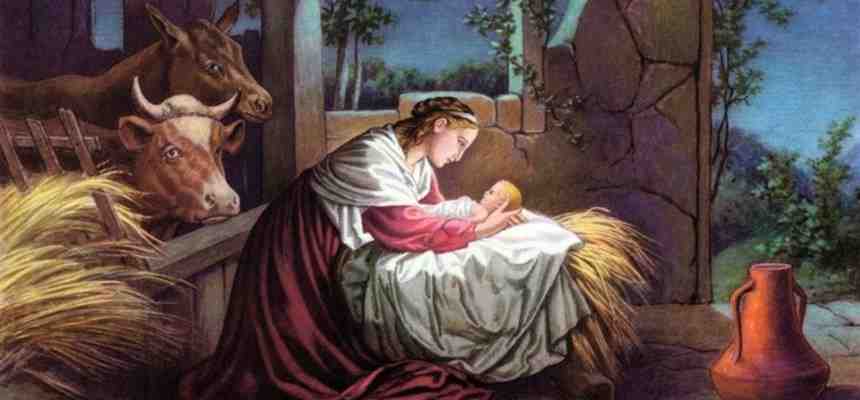Kiyahk Sundays, Paramon, and Nativity

First, the Sundays of Kiyahk:
1- The month of Kiyahk must have four Sundays, during which the first chapter of the Gospel according to St. Luke is divided into four parts. First Sunday is the annunciation of the birth of John the Baptist by the angel to Zechariah. The second Sunday is the annunciation of the birth of Christ by the angel to St. Mary. The third Sunday is the visit of St. Mary to Elizabeth. The fourth Sunday is the birth of St. John the Baptist.
2- If the fourth Sunday of Kiyahk falls immediately before the Nativity, it becomes of course a Paramon (The preparation day). In this case, the liturgy is prayed in the annual rite (tune) with the readings of the Paramon (28th of Kiyahk according to the Katamaros). This means that the month of Kiyahk would be left with only three Sundays, which cannot happen according to point number one. Therefore, the church arranged that the fifth Sunday of Hatour to be borrowed and added to the three Sundays of Kiyahk to complete the number of Sundays of Kiyahk to Four.
Perhaps we notice that whenever the last Sunday of Kiyahk falls as a Paramon, the month of Hatour always has five Sundays. Therefore, we automatically change the readings of the fifth Sunday of Hatour to the readings of the first Sunday of Kiyahk.
Second, Paramon of the Feast:
1- “Paramon” is a Greek word that precisely means “Extraordinary preparation” as the word Paramount in English, which signifies something of great concern or importance. This naming is used for the day that precedes the feasts of Nativity or Epiphany.
2- The rite of the Paramon is to fast with complete abstinence until sunset and the liturgy is prayed in the regular annual tune. However, in the liturgy, all hours of the book of Agpeya are prayed until the 12th hour, and fish is not allowed.
3- If the Paramon falls on a Saturday or Sunday, during which there is neither Metanoias nor abstinence from food, we should fast (with abstinence) the day before which is usually a Friday. In this case, the Paramon becomes two or three days, that is to say. If the Nativity Feast falls on a Sunday, we would have a two-day Paramon, Saturday and Sunday. If it falls on a Monday, we would have a three-day Paramon, Friday, Saturday, and Sunday and no eating of fish during these Paramon days, however abstinence would be on Friday only.
4- If the feasts of Nativity or Epiphany fall on any day other than Sunday or Monday, the Paramon becomes only one day.
Third, the date of Nativity:
1- In the early fathers’ canons (Dideche), the Nativity of the Lord Jesus should be celebrated on the 29th of the fourth month of the Egyptian calendar, which is Kiyahk 29. Therefore, we celebrate it on that date every year until now. In the early centuries of Christianity, the 29th of Kiyahk used to coincide with December 25th, but after the reformation to the Julian Calendar in 1582 AD, the 29th of Kiyahk slipped by 10 days and continues to slip. Now it falls on January 7 of the Julian calendar.
2- Additionally, the church keeps the period between the Annunciation (29 Paramhat) and the Nativity (29 Kiyahk) to be exactly 275 days, which is the period of conception of Jesus in the womb of St Mary. However, on a Coptic leap year (every four years) the small month (Nasi) becomes six days rather than five. In this case, if we celebrate the Nativity on the 29th of Kiyahk, the period of conception becomes 276 instead of 275, which is not the realistic period. Therefore, we celebrate the Nativity feast following a Coptic leap year on Kiyahk 28 to keep the conception period 275 days. The Nativity feast in this case is celebrated on the 28th and the 29th of Kiyahk, which is the case this year. The Coptic year 1727 AM (Anno Martyrum) was a leap year and its small month was six days, therefore we will celebrate the Nativity this year on the 28th and the 29th of Kiyahk and the Paramon falls on the 27th.
3- Although we will celebrate the Nativity feast on the 28th of Kiyahk, we will read the readings of the 29th on both the 28th and the 29th.
4- Notice that the celebration of the Nativity feast on the 28th and the 29th of Kiyahk (falling on January 7 and 8) occurs every four years and always falls on the year following the Coptic leap year.